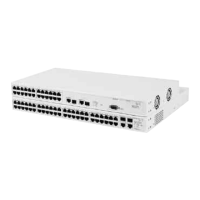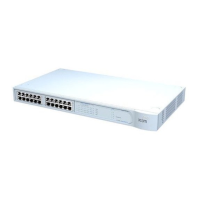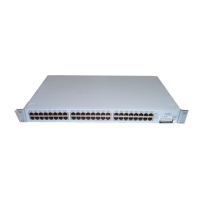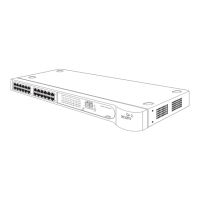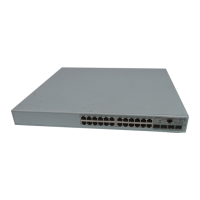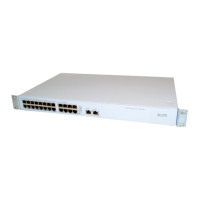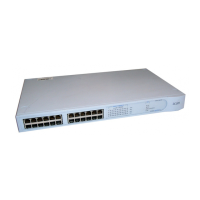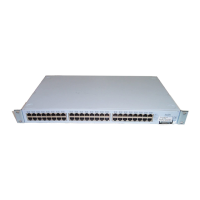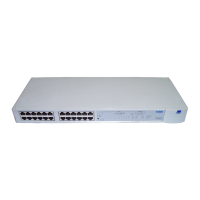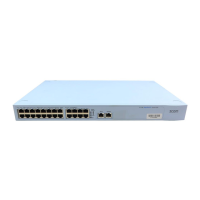VLANs and Your Switch 63
Figure 16 Two VLANs connected via a layer 3 switch
Creating New VLANs If you want to move a port from the Default VLAN to another VLAN, you
must first define information about the new VLAN on your Switch.
VLANs: Tagged and
Untagged
Membership
Your Switch supports 802.1Q VLAN tagging, a system that allows traffic
for multiple VLANs to be carried on a single physical (backbone) link.
When setting up VLANs you need to understand when to use untagged
and tagged membership of VLANs. Quite simply, if a port is in a single
VLAN it can be an untagged member, but if the port needs to be a
member of multiple VLANs, it must be a tagged member of all those
VLANs except its default VLAN. Typically endstations (for example, clients)
will be untagged members of one VLAN, while inter-Switch connections
will be tagged members of all VLANs.
A port must always be an untagged member of one VLAN. If a port has
its untagged membership removed it will be assigned untagged
membership of VLAN 1.
The IEEE Std 802.1Q-1998 defines how VLANs operate within an open
packet-switched network. An 802.1Q compliant packet carries additional
information that allows a Switch to determine to which VLAN the port
belongs. If a frame is carrying the additional information, it is known as
tagged.
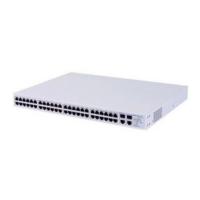
